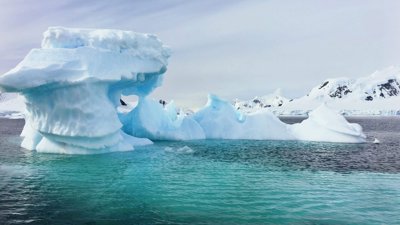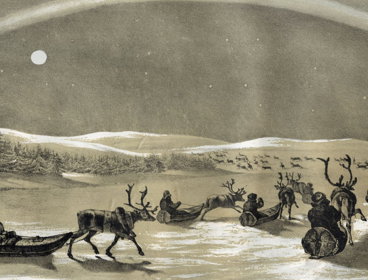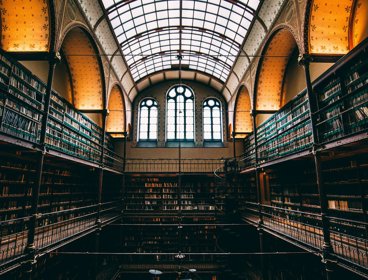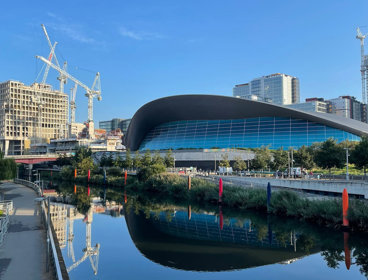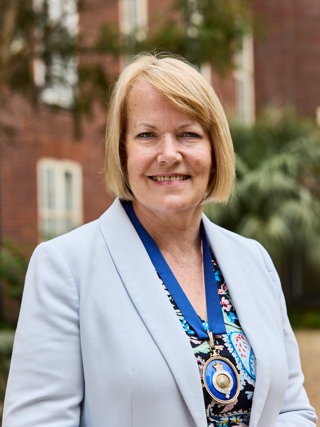Professor Dame Jane Francis was recently elected unopposed as the Society’s new President. We caught up with Jane to find out more about her and her life in geography.
Can you tell us a little bit about yourself?
I am a geoscientist by training and my research has focused on ancient climates of the Earth, millions of years ago. I have worked on rocks and fossils in the polar regions, which have changed from warm tropical landscapes (even when close to the poles) to the amazing icy worlds that we know today. This has provided me with insight into how our planet might change as our climate warms.
I have undertaken over 15 field expeditions to the Arctic and Antarctica, living in tent camps for several months at a time to map rocks and discover fossils to understand the past landscape of the region. Those were memorable trips working in amazing landscapes of mountains, glaciers and icecaps, remote and magical, sometimes wild and stormy.
In contrast, I’ve also worked in the hot deserts of central Australia, looking for evidence of ancient climates from rocks and fossils. As a university lecturer I taught students on geological fieldtrips, so I know how important it is to go out, explore and discover things for yourself, whether it’s near home or somewhere new.
What are the top three most precious geographical objects you own and why?
I acquired a billiard ball in a US station in Antarctica, engraved with Antarctic pictures by an artist there. The pictures include Scott’s hut, emperor penguins, a small map of the Antarctic continent, seals and the words “Not all who wander are lost”. During that expedition in Antarctica my team of fossil hunters wandered to and fro across rocky outcrops, as palaeontologists tend to do, searching for fossil plants, much to the frustration of our field guide who would have preferred us to stay on a safe straight route. We quoted that saying to him!
My maps, photos and notebooks from my fieldwork are very precious. They contain important observations and data from my polar expeditions, used for writing scientific papers, and are pretty much irreplaceable. There are little notes in my books about blizzards, animals I saw, and odd things that happened, bringing back nostalgic memories and images.
I have a collection of small things that I have brought home from my travels. Amongst them is a wooden carving from Africa of a tall slim person looking into the distance - it reminds me of people that I met on the road when I travelled across the vast open spaces of South Africa, miles from any villages.
You’re Director of the British Antarctic Survey, what does this involve?
The British Antarctic Survey (BAS) is a government research centre within the Natural Environment Research Council. As the name says, BAS includes scientists who study the Antarctic and the Arctic, especially how the polar regions are changing today from influence of human activity away from the poles and, in turn, how that is affecting the whole planet. They investigate a wide range of polar environments – the glaciers and ice sheets, sea ice and oceans, weather and climate, rocks and landscapes, animals in the ocean, tiny plants on land, and even space weather (e.g. the aurora) and satellite interactions.
I oversee an amazing range of people and activities, from mariners who crew our icebreaker the RRS Sir David Attenborough, pilots who fly our aircraft in remote icy regions, expedition guides who support the scientists in field camps and keep them safe, and plumbers, mechanics, cooks, doctors, station leaders in our field stations, plus engineers, map makers, environment experts, staff in our headquarters in Cambridge and more. There’s never a dull moment!
What has been the highlight of your career, regardless of how big or small, so far?
The highlight has been working in Antarctica. It is an amazing continent, so remote and so unlike other parts of the planet in its vast icy cover – I often think that it’s like visiting another planet.
I never ever thought when I was younger that I would have a career that literally took me to the ends of the Earth.
What decision has had the greatest impact on your career?
I spent five years in Australia at the University of Adelaide for a research project on ancient climates of Australia. I was offered a research post and had to make a quick decision - I said yes and soon found myself doing fieldwork in the beautiful, red, rocky deserts of central Australia with kangaroos, parrots, snakes, spiders and a few huge gum trees. I worked with an Antarctic geologist in Adelaide and ended up also working in the Arctic and Antarctica. Living overseas was a great experience and was the start of many great polar adventures.
What does the Society mean to you? Why did you volunteer for the role of the Society’s President?
The Society is a wonderful, prestigious organisation that has an amazing legacy of geography in all its forms and works with audiences who are passionate about the Earth and its people. I was very proud to be awarded the Society’s Patron’s Medal in 2022. It was such an honour to join the roll of previous medalists, which include many famous polar explorers. I have also been lucky enough to have gained experience from many activities related to the Society – research and teaching in geoscience, exploration of remote and fascinating landscapes, and advocacy for understanding our changing world. I hope I can support the Society with this experience in the next four years.
What do you hope to achieve during your four-year tenure as President?
I hope that I can help to promote the Society and the wonders of geography and our planet to as wide of an audience as possible. In practical terms, the Society has an outstanding archive of items that are not easy to access. It would be great to open up the building for visitors to be inspired by the Collections, but that also requires some modifications to the building and raising funds.
What are you most looking forward to as President?
I look forward to meeting all members of the Society but especially the younger members who are passionate about our planet and its people and are the future generation who understand how to live in balance with our world, more than we have done in the past.
Find out more about Jane’s research by watching this video made when she was awarded the Patron’s Medal in 2022:
